Contents
Growing ampel diascia from seeds is possible at home. The mountainous regions of the southern part of the African continent are considered the birthplace of the plant. Ampel diascia belongs to the Norichnikov family, in the territory of European countries it is grown as an annual. Professional landscape designers and florists have long noted the magnificent decorative properties of unpretentious diasia. The culture has a wide range of colors: from stylish salmon, orange, pink flowers to contrasting white, and various shades of purple.
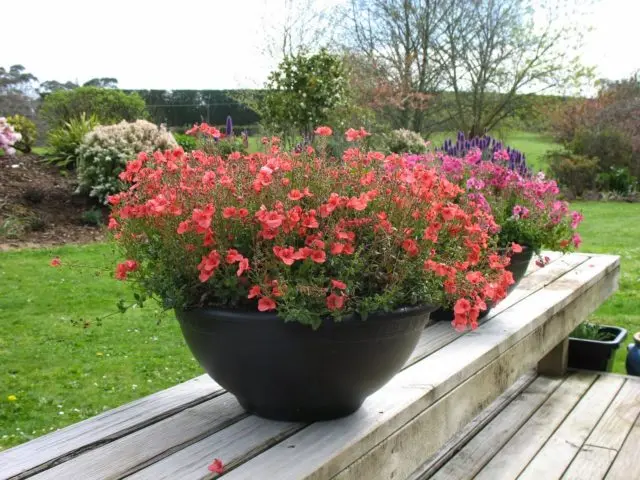
Multi-colored flowers of the ampelous diascia, resembling seashells in shape, look great in hanging planters, separate decorative containers and containers
The nuances of growing diasia from seeds
Experienced flower growers note some features of growing ampel diascia from seeds. Of all the known propagation methods of South African culture, the most productive is seed. There are two ways to plant prepared seeds:
- in open ground;
- for seedlings.
When sowing seeds in open ground, the flowering of diascia occurs quite late – by the month of August. In addition, unstable climatic conditions during the day and night in the spring can cause the death of seeds.
Plants grown from seedlings delight much earlier with their lush and numerous flowering (end of June). In this case, the gardener independently controls and adjusts the conditions for growth and development, which guarantees the survival of the culture.
The sowing technology itself has some nuances. Since the seeds of the plant are very small, many flower growers mix the seeds and sand before sowing the seedlings, after which they evenly distribute the mixture over the surface of the container with the prepared soil mixture.
When sowing seeds for seedlings in disposable containers, you can use wet toothpicks to alternately move 1-2 seeds into the ground.
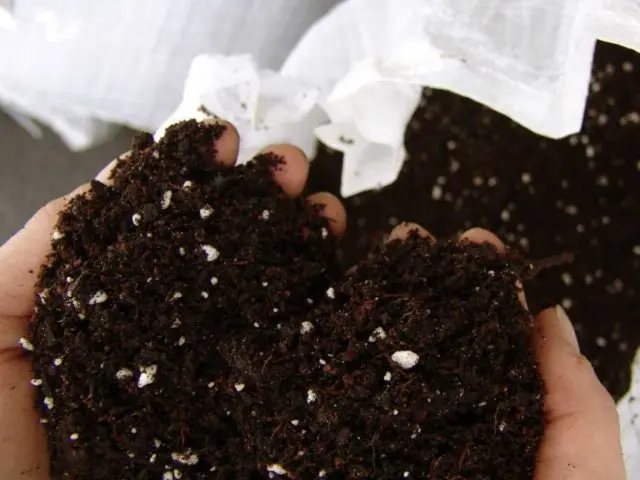
Young plants obtained from diascia seedlings bloom profusely by June
How to sow diascia seedlings
If you are growing diasia from seeds, you should plant the material at the end of winter. Knowing some simple rules for planting African crops will help you avoid common mistakes.
When to plant diascia for seedlings
Experienced flower growers recommend planting seeds for seedlings in late February or early March. This makes it possible to complete the transfer of seedlings to open ground or hanging planters at the end of May, and in a month to have spectacularly flowering plants in your backyard.
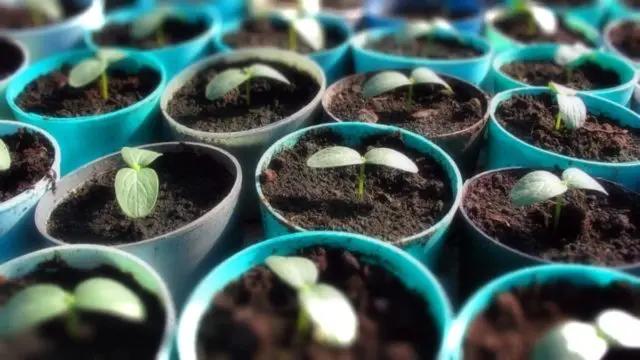
At the end of June, you can enjoy the budding of outlandish flowers if you sow seedlings in February
Tank selection and soil preparation
Photos and reviews on growing ampelous diasia from seeds make it possible to make sure that any container of small height (cassette container, wide bowl, plastic or wooden box) can be chosen for seedling germination. For individual (piece) sowing, any disposable containers are suitable.
Before sowing, the container is disinfected, filled with a mixture of slightly acidic earth and sand, well moistened.

For African culture, slightly acidic, moderately fertilized soil with the addition of river sand and earth is suitable.
Sowing Rules
Since the seeds of the plant are small, flower growers use various convenient sowing methods. The following methods are most often used in practice:
- seeds mixed with fine sand are evenly distributed over the surface of the soil in a container and slightly pressed into the soil;
- the seeds are transferred to a separate bowl with soil mixture using a wet wooden toothpick and slightly pressed into the ground.
The sowing algorithm is reduced to the following steps:
- preliminary moistening of the soil mixture in the seedling container;
- transfer of plant seeds to the ground with a slight indentation of seeds into the soil;
- irrigation of crops with warm water using a sprayer;
- creation of a greenhouse effect (covering a container with crops with plastic wrap, glass, transparent plastic cups or bottles).
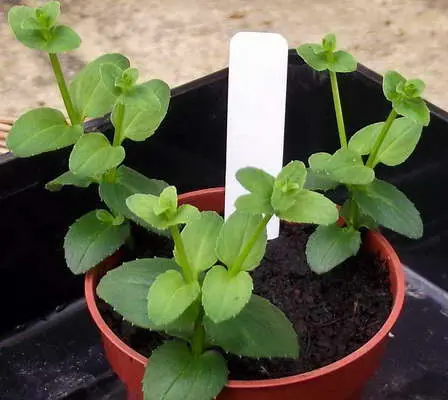
Small seeds can be “captured” with tweezers or a moistened wooden toothpick, skewer
Growing diasia from seeds at home
In order to grow healthy, viable seedlings, the delicate sprouts of African ornamental crops need the right care. It is important to create a microclimate comfortable for shoots, to ensure timely watering and fertilization.
Do not forget about the mandatory picking and pinching seedlings
Microclimate
It will take about 3 weeks for the seeds to form sprouts. A planting container with seedlings of African ornamental culture must be placed in a warm and bright place. The most comfortable for the germination of seed material is an ambient temperature of up to 20 ⁰С.
When the first shoots appear, the shelter is removed, the seedling container is placed in a bright place with a lower temperature (up to 15 ⁰С).
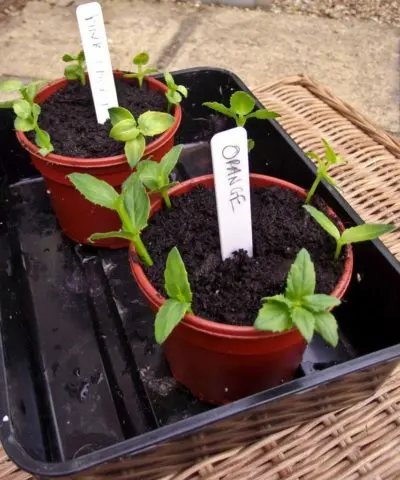
For the germination of seed material, a heat-loving African plant requires a sufficiently high temperature (up to 20 ⁰С)
Watering and fertilizing schedule
Proper watering is one of the main components of success for growing healthy seedlings at home. The soil with crops must be constantly moistened, avoiding the drying of the earth. It is impossible to water future seedlings in the usual way, since the seeds can be washed deep into the water flow. It is necessary to moisten crops only with a spray bottle.
Complex liquid fertilizers in a reduced dosage will stimulate the growth of seedlings and ensure future lush flowering. You should know that African ornamental culture does not need organic fertilizers.
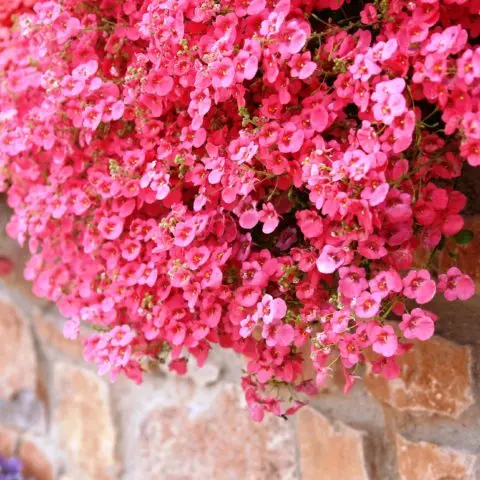
Excessive fertilization may cause future growth of abundant green vegetation and reduced flowering intensity.
Picks
2 weeks after sowing, diascia seedlings dive in separate containers. By this time, the seedlings have 2-3 main leaves. In order not to injure the plants during picking, experienced flower growers immediately sow the seeds in separate containers. Picking should be carried out carefully, trying not to damage the delicate parts of the plants.

Before picking, seedlings can be thinned out, leaving healthy and strong sprouts.
Topping
Simultaneously with the picking, it is necessary to pinch the tops of the plants for the first time. With this technique, you can begin the formation of a spectacular decorative bush. To stimulate a beautiful branch, the bush dives several more times (as the seedlings grow).

Before transplanting into open ground, diascia seedlings are hardened, exposing them to open air for 0,5-1 hour.
Transplantation in open ground
Gradual hardening of seedlings will allow the plant to adapt to changes in night and day temperatures, get used to the sun, wind, and precipitation. The time of “street walks” should be constantly increased: starting from 1-2 hours of being outdoors, continuing up to 1 day.
At the end of May, seedlings of the ampel diascia are planted in open ground (prefabricated flower beds, mixborders, individual flowerpots, hanging planters). For a permanent “place of residence”, rocky, loose, slightly acidic or neutral soils mixed with fine gravel and coarse sand are chosen.
African culture “loves” sunny and wind-protected areas. In places where water can accumulate (lowlands), effective drainage should be provided to prevent stagnant moisture. In the shade of trees and buildings, the plant will lose its decorative appeal and will be weak.
Plants are planted in flowerbeds in small holes, pressed a little, sprinkled with earth and mulched with mowed grass. On the beds, the distance between individual seedlings is observed – up to 15 cm.
In the case of transplanting a crop into hanging pots or flowerpots, drainage holes should be provided to prevent stagnant water. Up to 4 sprouts are placed in hanging decorative containers.
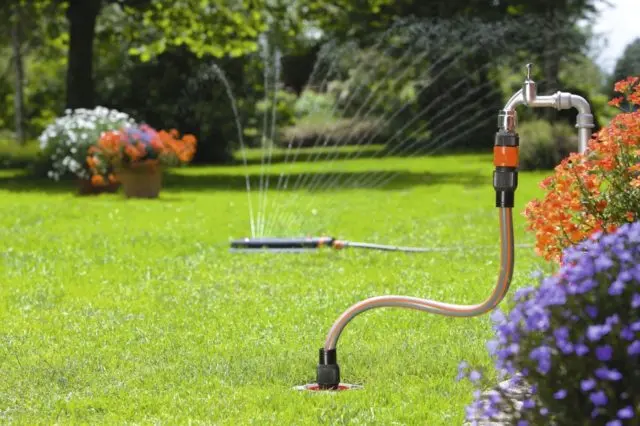
Plants like abundant watering, but do not tolerate stagnant water.
Conclusion
Growing ampelous diasia from seeds at home is an easy way to get healthy and viable seedlings of an amazing, profusely flowering South African plant. Lush foam of multi-colored diasia flowers, similar to small sea shells, will become a spectacular decoration of any part of the local area. Unexpected color variations of fashionable shades will favorably emphasize individual elements of landscape design.









